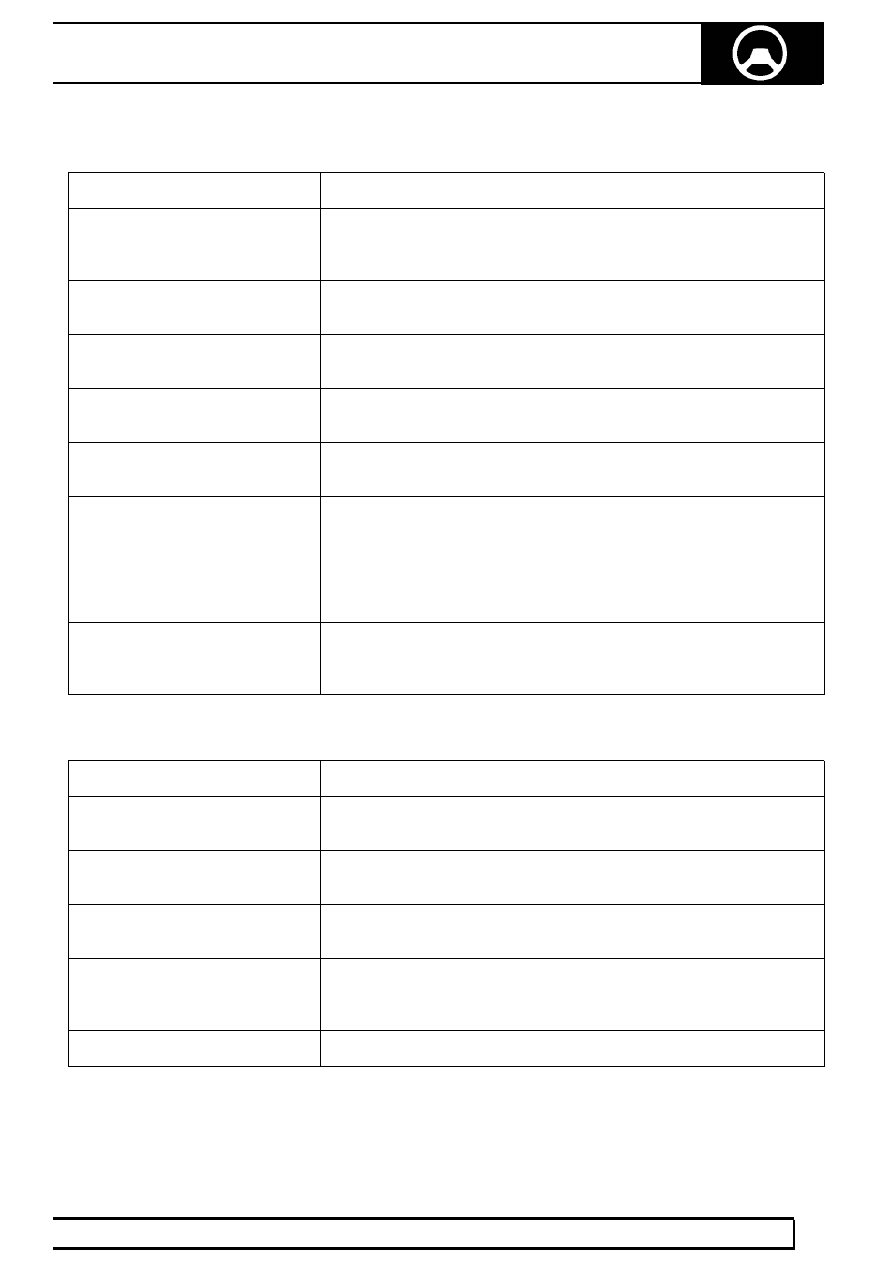Range Rover. Manual - part 175

STEERING
3
FAULT DIAGNOSIS
Symptom - Light Steering or Free Play At Steering Wheel.
POSSIBLE CAUSE
REMEDY
1. Front tyres over inflated.
1. Inflate tyres to correct pressure.
See GENERAL SPECIFICATION
DATA, Information.
2. Incorrect tyres fitted.
2. Fit tyres of correct specification.
See GENERAL SPECIFICATION
DATA, Information.
3. Worn front suspension
component bushes.
3. Check component bushes for wear and renew as necessary.
See
FRONT SUSPENSION, Repair.
4. Excessive free play in steering
linkage.
4. Check steering linkage components and adjust or renew as
necessary
See Repair.
5. Excessive free play in swivel
pin.
5. Check swivel pin components and adjust or renew as necessary.
6. Steering box alignment
incorrect causing excessive
back lash.
6. Centralize steering box.
See Repair.
7. Excessive free play in steering
column intermediate shaft
universal joint.
7. Check and renew intermediate shaft.
See Repair.
8. Excessive free play in steering
column bearings or universal
joint.
8. Renew steering column.
See Repair.
Symptom - Steering Vibration, Road Wheel Shimmy - Wobble.
POSSIBLE CAUSE
REMEDY
1. Road wheel/s out of balance.
1. Rebalance road wheel/s.
2. Worn/damaged steering
damper.
2. Renew steering damper.
See Repair.
3. Worn PAS components,
mountings and fixings.
3. Check and renew steering components, mountings and fixings as
necessary.
See Repair.
4. Worn front suspension
components, mountings and
fixings.
4. Check and renew suspension components, mountings and fixings.
See FRONT SUSPENSION, Repair.
5. Incorrect steering geometry.
5. Carry out full steering geometry check.
See Adjustment.